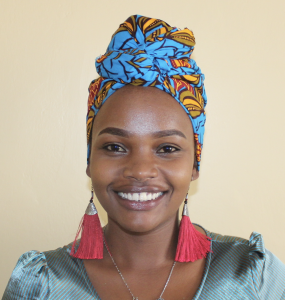Please note, original photos were taken before the pandemic.
There is no source of water at Kitambazi Primary School for the 297 pupils and 12 teachers and staff who come here every day.
Located in a hilly, semi-remote area with large boulders dotting the landscape, Kitambazi Primary School opened in 1983 and is sponsored by the Pentecostal Assemblies of God Church of Kenya. Students' strong academic performance consistently ranks the school within the top 10 in the Tambua zone, which is particularly impressive considering how much classtime these students miss due to their school's lack of water.
Before school each morning, students must collect water from home to bring to school. They either take water from their family's supply, usually fetched by their mother,s or they must go out on their own very early to fetch it themselves. Students carry their water along with their books on the busy road to school, where their day begins at 7:00 am. Classes run until noon when during the lunch break students must go back home to fetch more water before resuming afternoon lessons.
The water students deliver to the school is the only source of water for all of their drinking, cooking, and cleaning needs. Because the students can only carry small containers for long distances, and there is no central storage container beyond kitchen pots at school, it is difficult to meet basic water needs.
With each walk to school with water, students arrive tired and can lose focus in class. They are often late to class due to the walk, or because it took them a while to find enough water to bring. Some students will simply not return in the afternoon for fear of being punished for not bringing enough water.
Students also miss class when they get sick from the water they bring to school. Because water is combined for use at school, even 1 contaminated source can mean everyone suffers. Water-related diseases are not uncommon among teachers and pupils alike.
"I have personally suffered from flu and cold from drinking the water. Lately, I have started carrying or buying my own drinking water," said Headteacher John Amoke.
But students have no choice but to consume the water they carry, and the school kitchen staff rarely have enough water to properly prepare the school meals.
"The food is not cleaned properly due to lack of enough water in the school. We find small stones in the maize and beans on a daily basis," reported Deputy Headteacher Isaac Kijo.
The lack of water here also means students cannot wash their hands or their jerrycans, further accounting for the contaminated water and fecal-oral disease transmission.
What We Can Do:
Rain Tank
A 75,000-liter rainwater catchment tank will help alleviate the water crisis at this school. The school will help collect the needed construction materials such as sand, bricks, rocks, and water for mixing cement. We will complement their materials by providing an expert team of artisans, tools, hardware, and the guttering system. Once finished, this tank will begin catching rainfall that will be used by the school’s students and staff for drinking, handwashing, cooking, cleaning, and much more.
We and the school strongly believe that all of these components will work together to improve standards at this school, which will help lead to better student academic performance and will help to unlock the potential for these students to live better, healthier lives.
Handwashing Stations
There is currently nowhere for students to wash their hands after using the latrines or before eating lunch, let alone the water to do so.
The student health club will oversee the 2 new handwashing stations we will provide, and make sure they are kept clean and in working condition. The club leaders will fill the handwashing stations with water daily and make sure they are always supplied with a cleaning agent such as soap or ash.
VIP Latrines
The latrines on campus are in poor condition, and there are not enough for the size of the student population.
2 triple-door latrine blocks will be constructed with local materials that the school will help gather. 3 doors will serve the girls while the other 3 will serve the boys. All of these new latrines will have cement floors that are designed to be easy to use and to clean. And with a rain tank right on school property, there should be enough water to keep them clean.
Training on Health, Hygiene, COVID-19, and More
We will hold a 1-day intensive training session with students, teachers, and parents. This training will cover a wide range of topics including COVID-19 symptoms, transmission routes, and prevention; personal and environmental hygiene; and the operation and maintenance of the rain tank, latrines, and handwashing stations. There will be a special emphasis on handwashing.
Our team of facilitators will use a variety of methods to train, including participatory hygiene and sanitation transformation, and asset-based community development. We will initiate a student health club, which will prepare students to lead other pupils into healthy habits at school and at home. We will also lead lectures, group discussions, and provide illustrative handouts to teach health topics and ways to promote good hygiene practices within the school including handwashing and water treatment. We will then conduct a series of follow-up trainings before transitioning to our regularly scheduled support visits throughout the year.

 Rainwater Catchment
Rainwater Catchment
 Rehabilitation Project
Rehabilitation Project










































